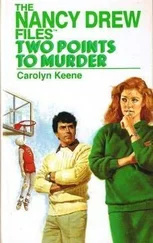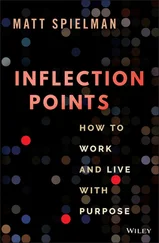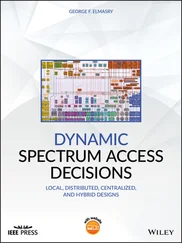Inaction had a cost. In the five years since I proposed reform, the Social Security crisis has grown more acute. The projected bankruptcy date has moved from 2042 to 2037. The shortfall in Social Security—the cost of fixing the problem—has grown more than $2 trillion since I raised the issue in 2005. That is more than we spent on the war in Iraq, Medicare modernization, and the Troubled Asset Relief Program combined. For anyone concerned about the deficits facing future generations, the failure to reform Social Security ranks among the most expensive missed opportunities of modern times.

She was standing on the doorstep, alone in the rain. She looked tired and scared. A few days earlier, Paula Rendón had said goodbye to her family in Mexico and boarded a bus bound for Houston. She arrived with no money and no friends. All she had was an address, 5525 Briar Drive, and the names of her new employers, George and Barbara Bush.
I was thirteen years old when I opened the door that evening in 1959. Before long, Paula became like a second mother to my younger brothers and sister and me. She worked hard, taking care of our family in Texas and her own in Mexico. Eventually she bought a home and moved her family to Houston. She always says the proudest day of her life came when she saw her grandson graduate from college. As governor and president, I had Paula in mind when I spoke about immigration reform. “Family values don’t stop at the Rio Grande,” I said.
Like Paula, most who left Mexico for the United States came to put food on the table for their families. Many worked backbreaking jobs, picking crops in the field or laying tar on roofs under the Texas sun. Some, like Paula, received permanent work visas. Others came as temporary workers through the Bracero Program. Some crossed the border illegally.
Over the next four decades, the size of America’s economy expanded from under $3 trillion to more than $10 trillion. The need for workers skyrocketed. Yet immigration and employment laws were slow to change. The Bracero Program expired in 1964 and was not replaced. The supply of permanent work visas did not rise anywhere near as fast as the demand for labor. With no practical way to enter the country lawfully, increasing numbers of immigrants came illegally.
An underground industry of document forgers and smugglers, known as coyotes, sprang up along the border. They stuffed people in the trunks of cars or left them to walk miles across the searing desert. The number of deaths was appalling. Yet immigrants, many of them determined to feed their families, kept coming.
By the time I ran for president, illegal immigration was a serious problem and getting worse. Our economy needed workers, but our laws were being undermined and human rights were being violated. In my 2000 campaign, I decided to take on the issue. I was confident we could find a rational solution that served our national interests and upheld our values.
My first partner on immigration reform was President Vicente Fox of Mexico. Vicente and his wife, Marta, were our guests at the first state dinner Laura and I held, on September 5, 2001. I discussed the possibility of creating a temporary worker program that would allow Mexicans to enter the United States lawfully to work a specific job for a fixed period of time. Vicente supported the idea, but he wanted more. He hoped America would legalize all Mexicans in the United States, a policy he called regularization. I made clear that would not happen. I believed amnesty—making illegal immigrants automatic citizens—would undercut the rule of law and encourage further illegal immigration.
Then 9/11 hit, and my most serious concern was that terrorists would slip into our country undetected. I put the idea of a temporary worker program on hold and concentrated on border security. In the four years after 9/11, we worked with Congress to increase funding for border protection by 60 percent, hired more than nineteen hundred new Border Patrol agents, and installed new technology, such as infrared cameras.
In October 2005, I signed a homeland security bill providing an additional $7.5 billion for border enforcement. The bill deepened our investment in technology and intelligence infrastructure at the border. It also funded an increase in bed space at federal detention facilities near the border, which allowed officials to stop letting the illegal immigrants they arrested return to society—a frustrating practice known as catch and release.
I hoped our focus on security would reassure the American people that we were serious about stopping illegal immigrants from entering the country. But defensive measures alone would not solve the problem. America’s economy was a magnet for the poor and the hopeful. The longest and tallest fence in the world would not stop those determined to provide for their families. A temporary worker program was the solution. If immigrants coming to work could enter the country lawfully, they would not have to sneak across the border. The economy would have a reliable supply of labor. The coyotes and human rights abusers would lose their market. And Border Patrol agents could focus on stopping the criminals, drug dealers, and terrorists.
On May 15, 2006, I gave the first-ever primetime presidential address on immigration. “We’re a nation of laws, and we must enforce our laws,” I said. “We’re also a nation of immigrants, and we must uphold that tradition, which has strengthened our country in so many ways.”
I then laid out a five-part plan to reform the immigration system. The first component was a major new investment in border security, including a pledge to double the size of the Border Patrol by the end of 2008 and temporarily deploy six thousand National Guard troops to support the Border Patrol. The second part was the temporary worker program, which would include a tamper-proof identification card. The third was stricter immigration enforcement at businesses, which would reduce exploitation and help slow demand for illegal workers. Fourth was to promote assimilation by requiring immigrants to learn English. Finally, I took on the thorniest question in the debate: What to do with the approximately twelve million illegal immigrants in the country?
“Some in this country argue that the solution is to deport every illegal immigrant, and that any proposal short of this amounts to amnesty,” I said. “I disagree. … There is a rational middle ground between granting an automatic path to citizenship for every illegal immigrant and a program of mass deportation.”
I went on to differentiate between illegal immigrants who crossed the border recently and those who had worked in America for many years and put down roots as responsible members of the community. I proposed that illegal immigrants in the latter category be allowed to apply for citizenship after meeting a stringent set of criteria, including paying a fine, making good on back taxes, learning English, and waiting in line behind those who had followed the law.
Ten days after the speech, the Senate passed a bill sponsored by Senators Chuck Hagel of Nebraska and Mel Martinez of Florida that conformed to my outline. But the House, which had been focused on border security alone, couldn’t get a comprehensive bill done before the midterm elections in November 2006. Then the Democrats took control of Congress.

Shortly after the 2006 elections, I invited a group of senior lawmakers to the Oval Office. Afterward, I pulled Ted Kennedy aside. Unfortunately, our relationship had deteriorated since the days of No Child Left Behind. I knew Ted disagreed with my decision to remove Saddam Hussein. But I was disappointed by his vitriolic speeches, in which he claimed I had “broken the basic bond of trust with the American people,” compared me to Richard Nixon, and called Iraq “George Bush’s Vietnam.”
Читать дальше












